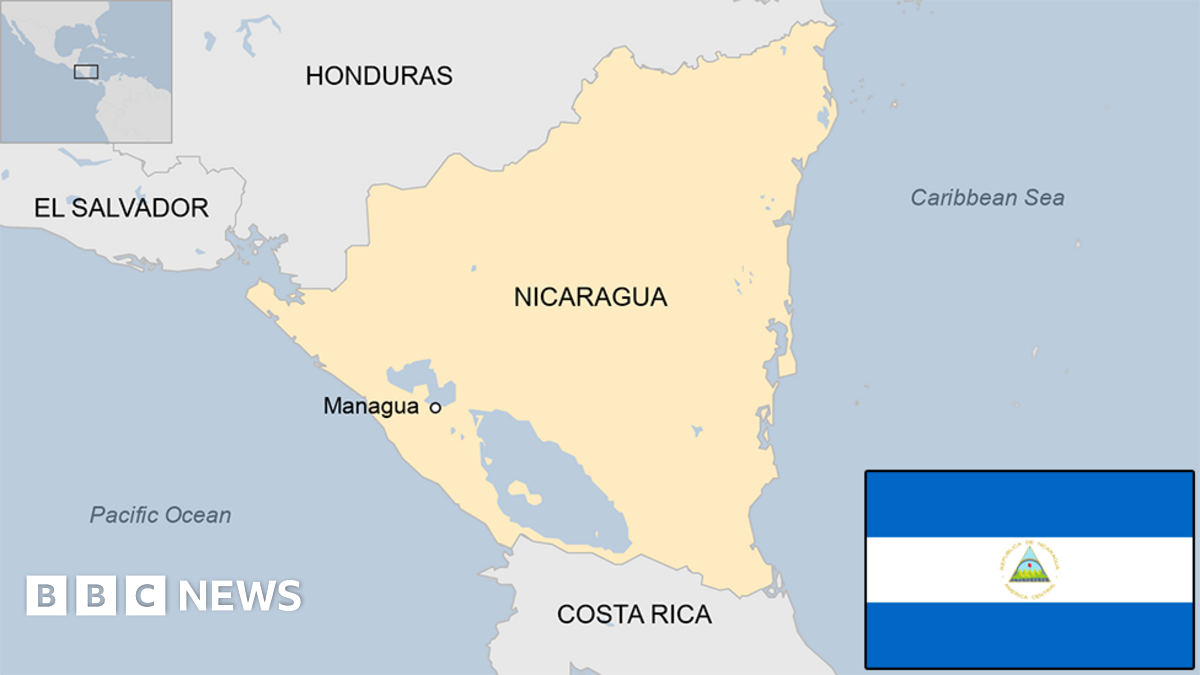
Nicaragua country profile – BBC News
[ad_1]
Some key dates in Nicaragua’s history:
1522 – Spanish explorer Gil Gonzalez de Avila names Nicaragua after a local Indian chief, Nicarao.
1523-24 – Francisco Hernandez de Cordoba completes conquest of Nicaragua.
17th-18th Centuries – British extend their influence over the inhabitants of Nicaragua’s Caribbean coast.
1821 – Nicaragua becomes independent, but is incorporated into the Mexican empire.
1823 – Nicaragua becomes part of the United Provinces of Central America, which also comprises Costa Rica, El Salvador, Guatemala and Honduras.
1838 – Nicaragua becomes fully independent. Country spends most of the 19th Century in violent power struggles between Liberal and Conservative factions.
1860 – British cede control over the country’s Caribbean coast to Nicaragua.
1909 – US supports a coup by Nicaragua’s conservative forces, beginning a long period of US interventions and occupations in Nicaragua.
1912–25 – US establishes military bases.
1927-33 – Guerrillas led by Augusto Cesar Sandino campaign against US military presence.
1934 – Sandino forces the US marines to withdraw. Sandino is assassinated. Anastasio Somoza Garcia, at the head of the National Guard, installs the Somoza family dynasty. Somoza and his sons Luis and Anastasio Jr rule Nicaragua until 1979.
1961 – Sandinista National Liberation Front (FSLN) founded.
1978 – Assassination of opposition leader Pedro Joaquin Chamorro triggers general strike and unites moderates and the Sandinista National Liberation Front (FSLN) in efforts to oust Somoza.
1979 – Sandanista military offensive ends with the defeat of Somoza. National reconstruction government is formed under Sandinista leader Daniel Ortega. Left-wing stance of Sandinista leaders results in formation of anti-Sandinista rebels, the Contras.
1980 – Somoza assassinated in Paraguay.
1982 – US-sponsored attacks by Contra rebels based in Honduras begin; state of emergency declared.
1984 – Daniel Ortega elected president; US mines Nicaraguan harbours.
1987-88 – Nicaraguan leadership signs peace agreement and subsequently holds talks with Contras.
1990 – Violeta Barrios de Chamorro leads an anti-Sandinista coalition to defeat Daniel Ortega and is elected president. She installs a national reconciliation government, the war ends and the economy gradually starts to recover.
2006 – Free trade deal with the US comes into effect. Congress approves the Central American Free Trade Agreement (Cafta) in October 2005.
Daniel Ortega is returned to power in elections.
2014 – Changes to Nicaragua’s constitution come into effect, allowing President Ortega to run for a third consecutive term in 2016. The opposition argues these are a threat to democracy.
2018 – Anti-government protests are suppressed with violence.
[ad_2]
Source link




